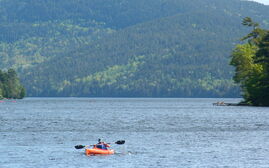Lobster research to enhance understanding of valuable resource
Market demand for Maine lobster has been surging, with prices on average up 37% for 2016 and the global market outstripping supply.
Given all that interest, the research community puts plenty of effort into understanding the lobster resource in order to boost sustainability. Lately, researchers at the Darling Marine Center in Walpole have been testing a new technique for figuring out the age of lobsters, in order to try to measure the animal’s health and stock sustainability in the face of warming ocean waters.
Unlike fish, mollusks and trees, lobsters and other crustaceans molt, which means they cast off their skeletons and thus discard outer signs of growth bands, according to a DMC release. Currently, a lobster’s age is estimated solely on size, but it’s a rough estimate because a lobster’s growth rate is affected by ocean conditions. Not knowing a lobster’s true age is a problem for scientists and fishery managers trying to measure the animal’s health and stock sustainability.
Now, recent research by Raouf Kilada of the University of New Brunswick found tree-ring-like microscopic bands within the gastric mill of lobsters and crabs, a part of the stomach that grinds up food. The bands exhibit growth pattern similar to tree rings.
Kilada visited the DMC this winter to share his technique with DMC research professor Rick Wahle and his graduate student, Carl Huntsberger.














Comments